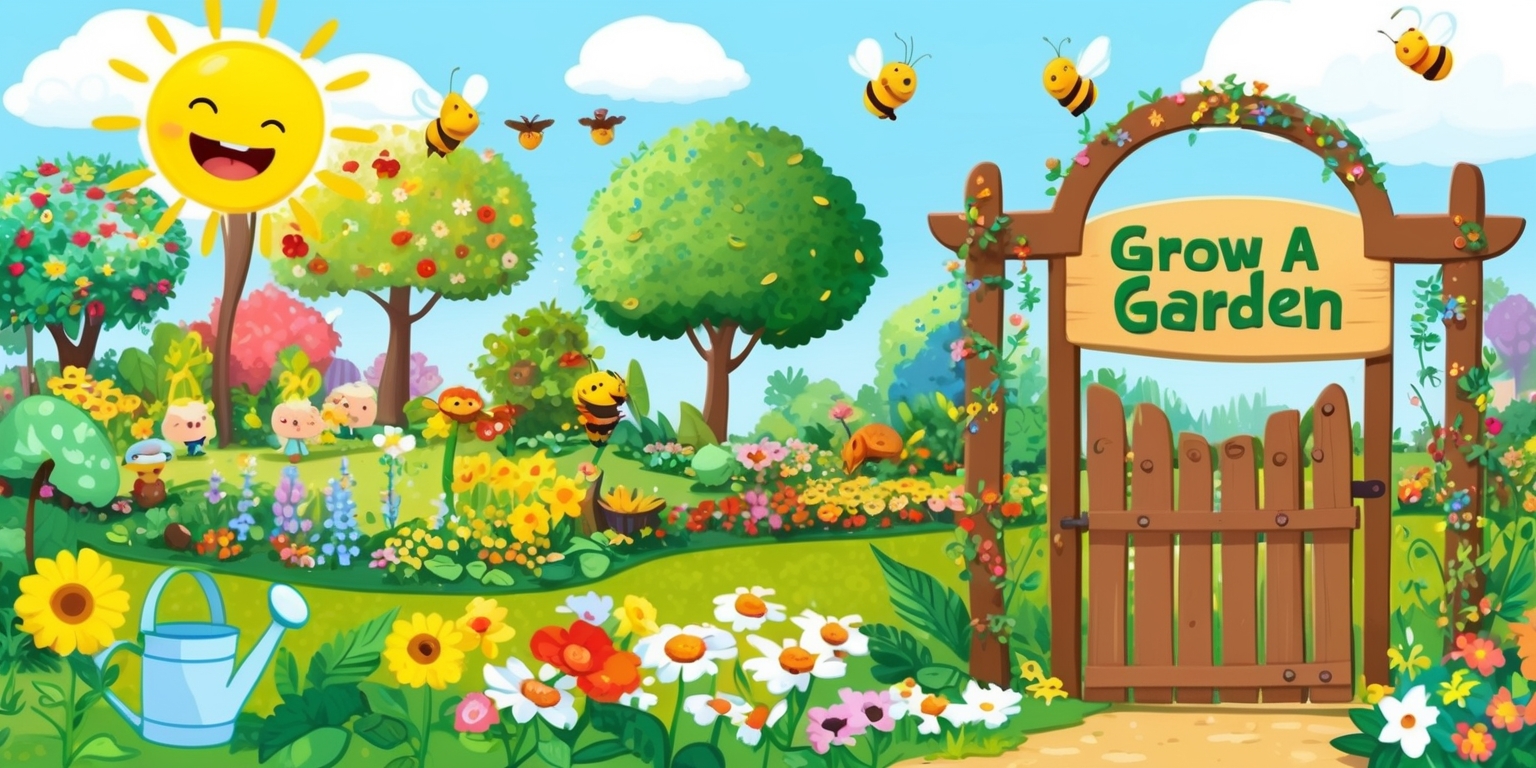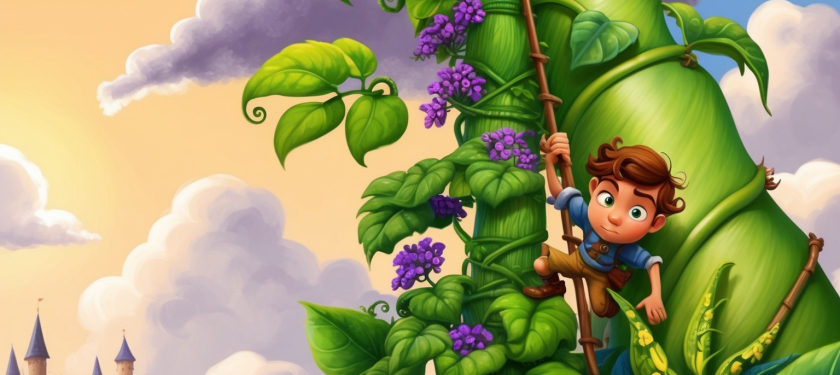Cultivating Nature and Strategy: The Journey of the Beanstalk Event
19-08-2025
The world of Grow a Garden invites players into a vibrant, interactive experience where nurturing plants and cultivating a magnificent beanstalk is not simply an assignment, but an ongoing journey that unlocks a variety of rewards. Participants engage in a series of events that demand meticulous organization and a well-conceived strategy decision-making, as they choose from a diverse selection of plant types to feed the ever-growing beanstalk. Every decision influences the progress of the game, making the understanding of plant categories fundamental to success. The event is structured to reward initiative and attentiveness, and it offers subtle hints of the deeper mechanics at play. The immersive process challenges players to think creatively about their garden’s composition, encouraging both exploration and precision in a uniquely gamified gardening simulation.
Exploring the Rich Variety of Plants
At the core of Grow a Garden event is an expansive selection of plant types that bring the garden to life. With a total of 20 distinct categories, each plant carries its own significance in the overall progression of the Beanstalk event. Some of these varieties are exclusive to a single category, while others make appearances in multiple groups, reflecting their versatile attributes. For instance, certain fruits appear as both nourishing produce and delightful berries, adding layers of strategy for the player. The detailed classification system not only guides players in understanding the unique capabilities of each crop but also influences the decision-making process on how best to allocate resources and efforts. This integration of variety with strategic use makes the experience both educational and deeply engaging.
Mechanics Behind the Beanstalk Progress
The growth of the beanstalk is intricately tied to the plants chosen by the player, where each addition contributes to the overall advancement. Each plant type yields a specific amount of progress based on its rarity and inherent characteristics. This mechanic compels players to carefully select which plant One possible rephrasing could be: "will yield the greatest positive effect on their." growth objectives. Rather than relying on random chance, the event requires careful planning and methodical matching of plant types to current needs. As players progress, they begin to understand the symbiotic relationship between careful nurturing and consistent rewards. The system behind this mechanism is robust, weaving together aspects of resource management with experiential progress, ensuring that every interaction with the game is meaningful and purpose-driven.
Strategic Planning and Gameplay Integration
Strategy plays an essential role in the successful cultivation of the garden. Players are challenged to adopt diverse tactics as they decide which plant types to prioritize. This involves not only recognizing how each plant influences the beanstalk’s growth but also understanding how different plants contribute to immediate versus long-term rewards. The planning aspect encourages a thoughtful pace of play, rewarding patience and introspection over impulsivity. With rewards tailored to the degree of success in the beanstalk’s development, gamers are incentivized to explore multiple strategies to maximize their potential. The strategic element is deeply intertwined with the gameplay, pushing players to assess the trade-offs of each decision continuously. This sophisticated interplay between choice and consequence deepens the overall gaming experience, making every session unique and challenging.
Interactive Event Dynamics

Grow a Garden is much more than a game; it transforms into an immersive journey interactive event that brings a community of players together. The Beanstalk event in particular is dynamic, with its layered tasks and evolving challenges. Engagement is sustained by the shifting roles of the different plant types, as well as the rewarding outcomes that come from feeding the beanstalk with the right combination of crops. The event’s structure demands that players are always attentive, recalibrating their strategies as new plant varieties are introduced and as their garden evolves over time. This sense of dynamism creates an atmosphere where every user feels connected to a larger narrative of growth and renewal. The interactive nature of the event, coupled with thoughtful game design, ensures that players remain actively engaged and invested in the ongoing success of their digital garden.
Understanding the Roles of Different Categories
One of the subtler aspects of Grow a Garden is the careful classification of plants into distinct categories. This classification is crucial as it directly influences how plants contribute to the beanstalk’s growth. For example, fruits like apples and peaches are grouped together, while roots such as carrots and onions form another segment, each playing a unique role. The categorization extends the gameplay into an educational realm where players learn about different plant families and their characteristics. Each type provides varying levels of progress, meaning that a well-balanced garden requires astute observation and management. The dual categorization of certain plants adds complexity, allowing for multi-faceted use within the game. This design enhances the interactive narrative and deepens the player’s connection with the garden, turning a simple task into an engaging exploration of botanical diversity.
Balancing Rarity with Garden Composition
Rarity is a key element that sharply defines the dynamics of the garden’s growth. Players need to balance everyday choices with high-impact decisions where rare plant types come into play. The concept of rarity not only affects the immediate progress of the beanstalk but also influences long-term strategies. Rare plants yield more progress, and as such, their integration into the garden demands a deliberate and cautious approach. The scarcity of these plants makes them all the more coveted, adding an element of excitement and reward anticipation. The challenge lies in acquiring a sufficient number of common plants while also not neglecting the rare and potent crops that offer the greatest rewards. This dual focus on abundance and rarity enriches the gameplay experience and fosters a deeper understanding of resource management within the game’s framework.
Visual and Aesthetic Appeal of the Garden
Beyond its strategic gameplay, Grow a Garden excels in creating an immersive visual experience that brings the garden to life. The aesthetic appeal of the game is evident in the vibrant colors, intricate details, and whimsical design choices that define the environment. Each plant and its corresponding type is rendered with a unique artistic flair, ensuring that the game is not only engaging from a gameplay perspective but also a treat for the eyes. The harmonious blend of nature-inspired artwork with playful animation adds an extra layer of charm to the event. These artistic choices are carefully calibrated to complement the functional aspects of the game, making the entire experience cohesive and delightful. The overall visual presentation enhances player immersion, turning each session into a visually stimulating Journey that embraces the enchanting beauty of the natural world and the art of digital gardening.
Event Progression and Reward Systems
The reward system in this event is designed to keep players invested as they nurture their beanstalk and strive for continuous improvement. Every action taken in the garden has a tangible impact on the progression toward significant in-game rewards, provided by helpful figures like Jack and Goliath. Feeding the beanstalk with the proper combination of plants not only accelerates the growth curve but also unlocks special bonuses and aids the player in surpassing previously set milestones. As each plant contributes a defined value to the overall progress, the harmonious balancing of rarity with quantity becomes the crux of effective gameplay. The excitement of attaining these rewards adds depth to the experience, transforming routine gameplay into a series of gratifying achievements that motivate players to return and optimize their garden constantly.
Interactive Documentation and Planning Tools
Within the game, supportive tools and resources play a prominent role in aiding player progression. The Garden Guide is one such essential resource, offering a comprehensive catalog of the plant types and Consider using: "an expansive aerial perspective of the garden."’s current status. This tool enables players to track which crops have been collected and understand which ones still require attention. It is especially useful during the Beanstalk event as it details the benefits associated with each plant type, providing insights that help in crafting better strategic plans. The guide is more than just a checklist—it acts as an interactive planner, empowering players to form well-informed decisions as the situation evolves. These integrated resources enhance the overall functionality of the game, creating a seamless experience that merges strategy with tactical planning through accessible documentation.
Adaptive Gameplay and Future Potential
The mechanics of Grow a Garden highlight adaptive gameplay, where the event continues to evolve over time. The current setup leaves room for potential enhancements and expansions as new plant varieties and events are introduced. This forward-thinking approach ensures ensuring that the game maintains a vibrant and continually evolving character-changing landscape, enticing players with fresh challenges and novel elements. As new updates roll out, players can expect an increase in both the variety and complexity of plant categories, further enriching the gameplay experience. The flexible design allows for additional layers of strategy and complexity, as future events will likely incorporate even more sophisticated reward structures and interactive components. Such adaptability not only fuels enduring interest but also ensures that participants are continuously motivated to explore new facets of the game.
Collaborative Engagement and Community Interaction
Another compelling aspect of Grow a Garden is the opportunity for enhanced community interaction and collaboration. The game's structure naturally leads players to exchange valuable perspectives, practical advice, and tactical approaches with each other, creating a vibrant community of garden enthusiasts. In groups and forums, gamers discuss the merits of collecting specific plants, share their experiences with rare finds, and offer advice on optimizing the feeding of the beanstalk. This collaborative environment not only improves individual gameplay through shared knowledge but it also nurtures a genuine feeling of inclusion among all those involved dynamics of the event encourage healthy interactions and strategic alliances, allowing for an exchange of innovative ideas that can transform a solitary activity into a collective adventure. The game, therefore, thrives on both individual skill and community-driven insights, cementing its standing as a socially engaging experience.












Leave a comment
Your comment is awaiting moderation. We save your draft here
0 Comments